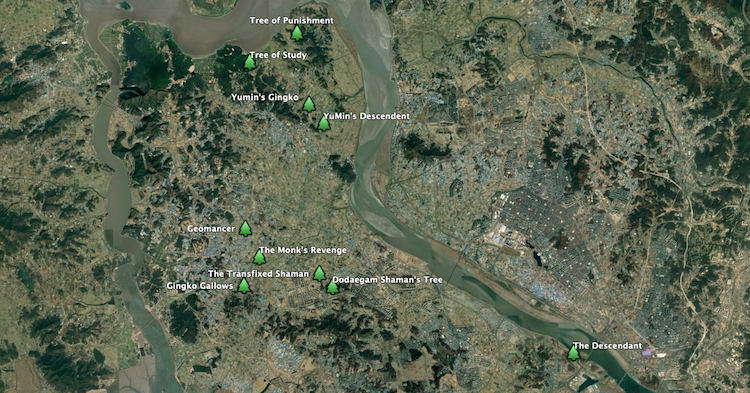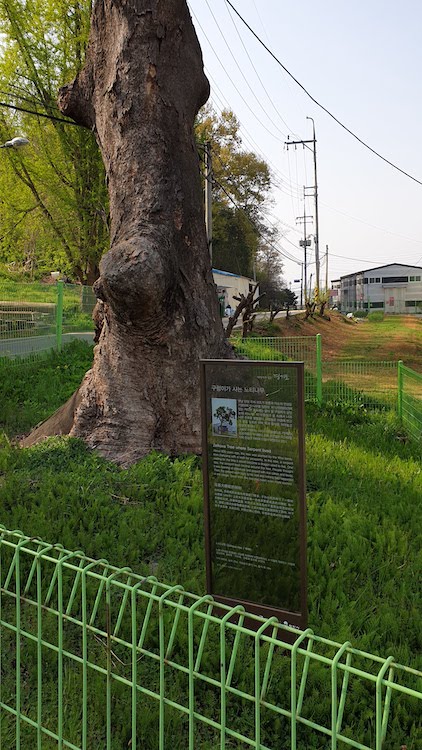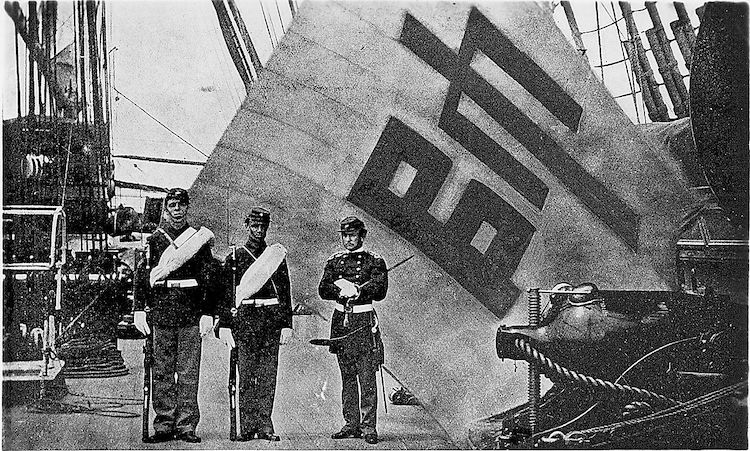My friend Eric dropped me a message the other day saying he’ll be open for a hunt on Saturday. We’d been talking over the winter during all of the area restrictions to be sure that as soon as we got an opening, we’d be ready to jump on it. Last year during gaps in the closures, we did tree hunts in Gimpo and Yich’eon (which got cut short and requires another trip). And of course, every trip is a discovery. Mainly because we both like to hunt. Riding is a great joy, but when you have so many interesting things as destinations, it adds an entirely different dimension to the ride.

We’ve been at it long enough to have discovered over 100 trees, and we still have a few in the queue. This all started some years ago when I found a tree about 15 miles east of Osan on the north shore of Gosam Reservoir. It was there I got to see the story of Anseong’s “original” pear tree (the area is famous for pears) in Korean, English, and Chinese. I didn’t think much of it – I’d seen signs describing interesting events or telling interesting stories every so often in my rides. But then, more than a year later, I found another tree with the same kind of sign. Then another. And another. And when I realized there was a series of them in the province, I started hunting. I’d scour satellite imagery and maps, then jump down to street view by anything that looked promising, and I probably found another couple dozen trees this way. It was almost as exciting to hunt them this way as it was to actually go out and find them.

I knew Eric from the time he was a Korean linguist in the Air Force. He was living and working in Seoul and I followed him on Strava and Facebook. Knowing he rode a lot, I sent him the locations of a couple of trees up his way to check out, and he actually did. Wanting to ride the Han River myself, and knowing a few trees along the way, I asked if I could tag along on a ride. We started with a great ride one out to the East, then hit Gimpo (to the West) on a second ride, and then a third going even farther to the East.
Then one day a Korean friend found a book that listed all of these trees (and a few other natural phenomena) within Gyeonggi Province – a pdf file on line telling us the location of 234 trees and other phenomena, along with their stories (which is good because some of the signs – and even one of the trees – are now missing). I’d been hunting the trees without the book for quite some time, but once I found it, I discovered so many others that I wouldn’t even have known – to include five more in Gimpo, some of which we’d just missed on our first ride.
But now, even though we’re out of Gimpo trees, there are some other things to see up there. Gimpo is actually a peninsula formed by the Han River on the East, the confluence of the Han and Imjin Rivers on its northern border (with North Korea right across the river), and an island to the West called Ganghwado. The strip of water between Gimpo and Ganghwado – the Ganghwa Strait – was fairly important in Korea’s past. It was the major approach to the mouth of the Han for ships coming up the coast, and so was is bordered by several fortresses. Eric clued me in to one very interesting fact about it, too: the United States actually took some of these forts by force in a diplomatic dust-up in 1871.

So of course I’m pretty excited now for this upcoming Saturday. I’ve plotted an 81 mile course that passes some royal tombs on the way to the East bank of the strait, where there is one fortress near its northern mouth (and maybe a protected tree not much further north). Then across a bridge to hit 7 more fortresses, a couple of Catholic martyrs’ shrines, and a war museum (that covers the fight with the US to some extent). And the ride back is almost entirely flat, paralleling a canal at the start of the Incheon to Busan route.
It’ll be a long day, but a great hunt, and I hope to post something Saturday if all goes well. Stay tuned.
